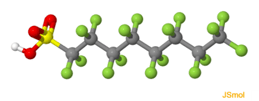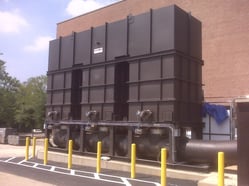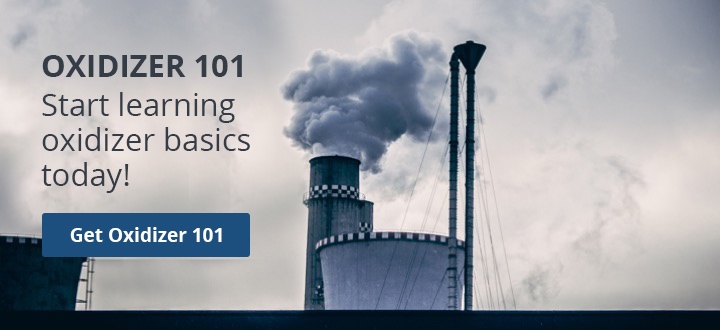PFAS Air Emissions Control
What are PFAS?
Per- and polyfluoroalkyl substances (PFAS) are a group of man-made "Forever Chemicals" that includes PFOA (perfluorooctanoic acid), PFOS (perfluorooctanesulfonic acid), GenX, and many other chemicals that have been in use since the 1940s. The group contains several categories and classes of durable chemicals and materials with properties that include oil, water, temperature, chemical and fire resistance, as well as electrical insulating properties.
 PFAS have been found in many consumer products like cookware, food packaging, and stain repellants. PFAS manufacturing and processing facilities, airports, and military installations that use firefighting foams are some of the main sources of PFAS. Although the major U.S. manufacturers of PFOA and PFOS agreed to voluntarily phase out production, they are still produced internationally and can be imported into the United States in consumer goods such as carpet, leather and apparel, textiles, paper and packaging, coatings, rubber and plastics. The strength of the carbon-fluorine bond also means that these compounds do not easily degrade in most environments. Therefore, the risk of exposure or consumption from previously released emissions remains high.
PFAS have been found in many consumer products like cookware, food packaging, and stain repellants. PFAS manufacturing and processing facilities, airports, and military installations that use firefighting foams are some of the main sources of PFAS. Although the major U.S. manufacturers of PFOA and PFOS agreed to voluntarily phase out production, they are still produced internationally and can be imported into the United States in consumer goods such as carpet, leather and apparel, textiles, paper and packaging, coatings, rubber and plastics. The strength of the carbon-fluorine bond also means that these compounds do not easily degrade in most environments. Therefore, the risk of exposure or consumption from previously released emissions remains high.
Regulatory Status
The U.S. EPA has found that air emissions of PFAS from industrial sources are a significant route for PFAS releases to the environment and is evidenced by deposition as well as their presence in rainwater. Standardized methods for testing levels of PFAS in source emissions or ambient air do not yet exist, but the U.S.EPA is developing them and working with multiple state environmental agencies to do so.
PFAS air emissions are not currently regulated under the CAA or any other federal law, and no quantity limits or monitoring requirements applicable to air emissions sources currently exist. EPA has initiated the regulatory development process for listing perfluorooctanoic acid (PFOA) and perfluorooctanesulfonic acid (PFOS) as hazardous substances under the Comprehensive Environmental Response, Compensation and Liability Act (CERCLA). Listing PFAS as hazardous substances under CERCLA could require facilities that predictably release PFAS to the air to submit continuous release reports.
With respect to the CAA, at least one bill pending in Congress would direct the EPA to promulgate a rule listing all PFAS as hazardous air pollutants, or HAPs. If enacted, PFAS emissions would be subject to strict emissions limits and other CAA permitting requirements, including the installation of control technology. PFAS listed as HAPs would also automatically be deemed hazardous substances under CERCLA.
Additionally, and irrespective of the potential listing of PFAS HAPs, the CAA grants the EPA the power to file suit and issue emergency administrative orders to stop any air pollution source that presents an imminent and substantial endangerment to public health or welfare, or to the environment. Given the current focus on PFAS, the EPA could choose to use this authority to regulate significant sources of PFAS air emissions.
States can regulate air emissions beyond the regulatory “floor” set by the CAA to reach chemicals not currently covered by federal law. Some state environmental agencies have already done so with respect to PFAS air emissions.
For example, North Carolina entered into a consent order with a chemical manufacturing facility, and New Hampshire issued an air permit for a fabric coating facility, both of which require the respective facilities to install thermal oxidizers to significantly reduce PFAS air emissions. State activity will continue accelerate once U.S. EPA begins setting enforceable emissions limits and other requirements.
Treatment of PFAS
Treatment technologies for PFAS in environmental media are still evolving and the appropriate control strategy will likely vary based on the specific PFAS chemicals involved. While thermal incineration is currently considered the only effective destruction method, more data on incineration conditions and products of incomplete combustion (PICs) is still being developed.
The three T’s of combustion (Time, Temperature and Turbulence) play an important role in the destruction of PFAS. The strong carbon-fluorine (C-F) bonds in PFAS require a high amount of energy to dissociate the chemical structure. High temperatures along with longer residence times and turbulence are necessary to destroy the PFAS.
Regenerative Thermal Oxidizers (RTO)  use extremely high heat to destroy volatile organic compounds (VOCs) and hazardous air pollutants (HAPs). During operation of the standard two chamber RTO, the VOCs are directed into one of the system’s regenerators, an internally insulated vessel containing specialized ceramic media which allows thermal rate efficiencies up to 97%. The contaminated gases are passed through the first regenerator where energy is transferred from the ceramic media to the gas in order to elevate the temperature. This elevated temperature approaches the ignition level for most solvents and is then directed from the ceramic bed into the combustion chamber. As the stream exits the ceramic bed and travels through the internally lined combustion chamber, minimal heat is added to ensure a proper oxidation temperature and a designed dwell time is maintained providing destruction of the VOCS at greater than 98% efficiency. The resultant clean, oxidized gases are directed to the second regenerator to absorb the heat energy before being released to the atmosphere.
use extremely high heat to destroy volatile organic compounds (VOCs) and hazardous air pollutants (HAPs). During operation of the standard two chamber RTO, the VOCs are directed into one of the system’s regenerators, an internally insulated vessel containing specialized ceramic media which allows thermal rate efficiencies up to 97%. The contaminated gases are passed through the first regenerator where energy is transferred from the ceramic media to the gas in order to elevate the temperature. This elevated temperature approaches the ignition level for most solvents and is then directed from the ceramic bed into the combustion chamber. As the stream exits the ceramic bed and travels through the internally lined combustion chamber, minimal heat is added to ensure a proper oxidation temperature and a designed dwell time is maintained providing destruction of the VOCS at greater than 98% efficiency. The resultant clean, oxidized gases are directed to the second regenerator to absorb the heat energy before being released to the atmosphere.
The combustion reaction of PFAS produces post-combustion gases that will contain Hydrofluoric Acid (HF). Even low concentrations of HF can be corrosive, and special engineering has to be considered in the design, material selection, and auxiliary equipment to provide a long-lasting system. In addition, the oxidation technology must include a quencher and scrubber to cool the gases after the combustion chamber and neutralize the HF emissions. The combination of a thermal oxidizer with a quencher and scrubber can result in more than 99.9 percent removal of all VOCs, HAPs and HF entering the system.


 use extremely high heat to destroy volatile organic compounds (VOCs) and hazardous air pollutants (HAPs). During operation of the standard two chamber RTO, the VOCs are directed into one of the system’s regenerators, an internally insulated vessel containing specialized ceramic media which allows thermal rate efficiencies up to 97%. The contaminated gases are passed through the first regenerator where energy is transferred from the ceramic media to the gas in order to elevate the temperature. This elevated temperature approaches the ignition level for most solvents and is then directed from the ceramic bed into the combustion chamber. As the stream exits the ceramic bed and travels through the internally lined combustion chamber, minimal heat is added to ensure a proper oxidation temperature and a designed dwell time is maintained providing destruction of the VOCS at greater than 98% efficiency. The resultant clean, oxidized gases are directed to the second regenerator to absorb the heat energy before being released to the atmosphere.
use extremely high heat to destroy volatile organic compounds (VOCs) and hazardous air pollutants (HAPs). During operation of the standard two chamber RTO, the VOCs are directed into one of the system’s regenerators, an internally insulated vessel containing specialized ceramic media which allows thermal rate efficiencies up to 97%. The contaminated gases are passed through the first regenerator where energy is transferred from the ceramic media to the gas in order to elevate the temperature. This elevated temperature approaches the ignition level for most solvents and is then directed from the ceramic bed into the combustion chamber. As the stream exits the ceramic bed and travels through the internally lined combustion chamber, minimal heat is added to ensure a proper oxidation temperature and a designed dwell time is maintained providing destruction of the VOCS at greater than 98% efficiency. The resultant clean, oxidized gases are directed to the second regenerator to absorb the heat energy before being released to the atmosphere.





